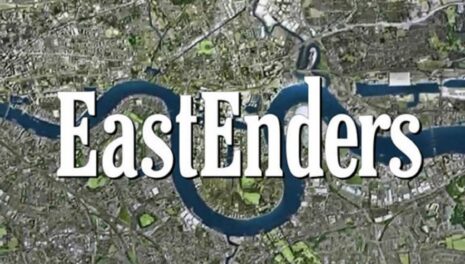How many times have you been watching your favourite TV show, only for a storyline based around foster care to be introduced?
The ‘big two’ UK soap operas, Coronation Street and Eastenders, have both featured prominent fostering storylines at one time or another. If correctly researched and deployed, these storylines can provide a window into fostering for millions of viewers.
Before we look at three examples of foster care being depicted in TV shows, let’s start with how important it is to feature such storylines.
Dispelling the myths
A fostering storyline done well can dispel entrenched beliefs and myths. In the hands of a popular TV show with high viewership, this can be hugely beneficial. But let us be clear here: ‘done well’ does not mean through a rose-tinted lens. It means it is constructed realistically, acknowledging both highs and lows, rewards and challenges.
To label fostering as a negative experience for young people is a common misconception. However, to present a storyline that reflects past trauma, upheaval and challenges faced by a young person in care is entirely accurate. When balanced with the support network around them, of which a foster carer is one significant element, you start to see a rounded, honest picture of what foster care looks like in the real world.
No young person’s experience of foster care will be the same as another’s – so it can never be generalised, boxed up and labelled as such. But the more that foster care is depicted realistically in TV shows, or on any other media platform, the more opportunity there is to deconstruct misinformation and myth.
The opportunity to educate
A main component of myth-busting is re-education, and TV shows have the power to educate on a grand scale. Get it wrong and you further reinforce embedded misconceptions, but get it right and you could help change public perceptions.
TV storylines about foster care can really delve into the minutiae and almost provide fictional ‘case studies’ or accounts. They can cover subjects such as the diverse types of foster care, or how involved a young person becomes in the approval and acceptance of a fostering home.
Many people may have been unaware that a foster home can be provided for both a child and their parent(s) before Coronation Street featured a prominent storyline about this type of foster care.
Many TV programmes that feature subjects such as foster care are also exceptionally good at signposting after the credits have rolled. Often featuring links for more information or advice, it can also validate the subject matter whilst instilling trust that the featured storyline has been thoroughly researched and executed.
So let us look at three fostering storylines in British TV shows:
Kelly Neelan (Coronation Street)
From 2019-2022, Coronation Street featured a character named Kelly Neelan (played by Millie Gibson). Kelly was introduced as the teenage daughter of Rick and Laura – but went on to be fostered by Toyah Battersby and Imran Habeeb.
Imran supported Kelly when she was wrongly accused of a crime, which fully demonstrated foster carer advocation. Overall, both Toyah and Imran were a positive force in Kelly’s life.
In the real world, this is an important storyline to highlight because it shines a light on the need for foster carers who can specifically care for teenagers. A common myth is that only very young children require foster care, when there is actually a need for more foster carers to care for older children.
The storyline also highlighted the trust and allyship between Kelly and her foster carers; she had someone to turn to and, most importantly, someone she could rely on. Trust is something that many young people in care struggle with, and can take a long time to establish.
Andy Elvin, TACT’s CEO, was consulted as a script advisor for the Kelly storyline, to ensure that it was an accurate depiction of foster care: “We are very grateful that Coronation Street make the effort to have storylines and dialogue that try to respect the reality of the complex and emotive situations that some children and families find themselves in.”
Ruby Sunday (Dr Who)
Ruby Sunday was introduced as the Doctor’s new companion in the Dr Who Christmas Special that aired in December 2023, called ‘The Church on Ruby Road’.
Following her role as Kelly Neelan in Coronation Street, Millie Gibson took on another fostering storyline, and played Ruby, who was left abandoned on the steps of a church as a baby. Ruby was fostered and was then subsequently adopted by her foster Mum.
Although the finer details about Ruby’s fostering journey aren’t covered in the show, the circumstances surrounding her story are based on fact. Sometimes, very young children who enter the care system are adopted – but only if there is no possible chance of reunion with their birth families. Whilst their current foster carer is not obliged to adopt, it can sometimes happen in this way.
Children who are fostered or adopted at a very young age are less likely to carry or display obvious signs of trauma, but that is not to say that they have not been adversely affected by some of the experiences they have encountered.

Millie Gibson plays Kelly in Coronation Street and Ruby in Dr Who
(Photo: Meena, CC BY-SA 4.0, via Wikimedia Commons)
Ashton (Eastenders)
After losing their daughter, Whitney Dean and Zack Hudson decided to become foster carers.
Their initial fostering application was rejected due to them living in a house share situation, but after moving into their own house their application was accepted and they were visited by a social worker.
The social worker began the assessment process and talked to the couple about their past. Despite some concerns from Whitney that their fostering application would be rejected once again, the couple were approved and began fostering a boy named Ashton.
After a realisation that fostering wasn’t what they thought it was going to be, things began to turn around when Zack made Ashton a play den, and they began painting together.
After Ashton had a mild allergic reaction, Whitney was left fearful that this would have an impact on them as foster carers. Further upset was caused when Whitney learned that Ashton was being adopted and would be leaving their care.
All in all, there are quite a few points to address here.
To begin with, the initial requirement that Whitney and Zack have their own home before being able to commence a fostering application is correct. Foster carers are required to care for vulnerable children, so whilst other family members in the fostering home would not be problem, house shares with friends would not be a suitable fostering environment.
The home visit from the social worker, along with the commencement of the assessment process, is what would happen during a real fostering application. Potential foster carers are required to participate in a detailed assessment called a Form F, where they will be asked many personal questions about their life and relationships. The final written assessment is put to a ‘panel’ to decide on whether a person is able to become an approved foster carer.
Feeling a little overwhelmed as a foster carer, particularly in those initial early stages, is totally natural. This is why foster carers have a support network around them, even if it’s just someone to talk to and share thoughts or concerns. Fostering is not easy, but neither is it without its emotional rewards.
“Overall, the Ashton storyline represents an accurate and balanced account of the fostering journey, from initial enquiry right through to providing care for a child.”
The den building and painting activities shows a commitment on the part of Whitney and Zack to bond with Ashton. This demonstrates to Ashton that the adults in the fostering home want to spend time with him, which could have been something lacking in his birth home. A bond between carer and young person is important to establish trust, helping a child to emotionally recover from the trauma they will have experienced.
Incidents such as the mild allergic reaction can make foster carers fearful of repercussions. However, it is important to remember that foster carers are not infallible, and that these situations are just as likely to happen to parents with their own children. If the immediate situation is dealt with properly and safely, and the incident recorded, a very minor incident such as this should not jeopardise a carer’s fostering journey.
Feelings of upset when Ashton needs to move on shows how much the foster carers care for him, and Zack was right to point out that it is all in Ashton’s best interests. In the real world, this wouldn’t necessarily mean that the couple would not see Ashton again; often children are given the option of keeping in touch with their previous foster carers if they have played a significant and positive part in their life.
Overall, the Ashton storyline represents an accurate and balanced account of the fostering journey, from initial enquiry right through to providing care for a child. It is clear that the storyline was properly researched, possibly with the help from someone within the fostering sector.
Incorporating a fostering storyline into a TV drama series requires extensive research and, it is hoped, a desire to present the truth. We’re not looking for rose-tinted lens depictions of fostering, but neither should it be presented as a negative experience for a carer and/or young person.
All the examples above provide a realistic, accurate and balanced view of foster care. They highlight the processes, the day-to-day experiences and the emotional aspects in a well-informed, sensitive manner.
When featured in TV shows watched by millions of people, these storylines can truly educate and change public perceptions. And that can only be a good thing.


